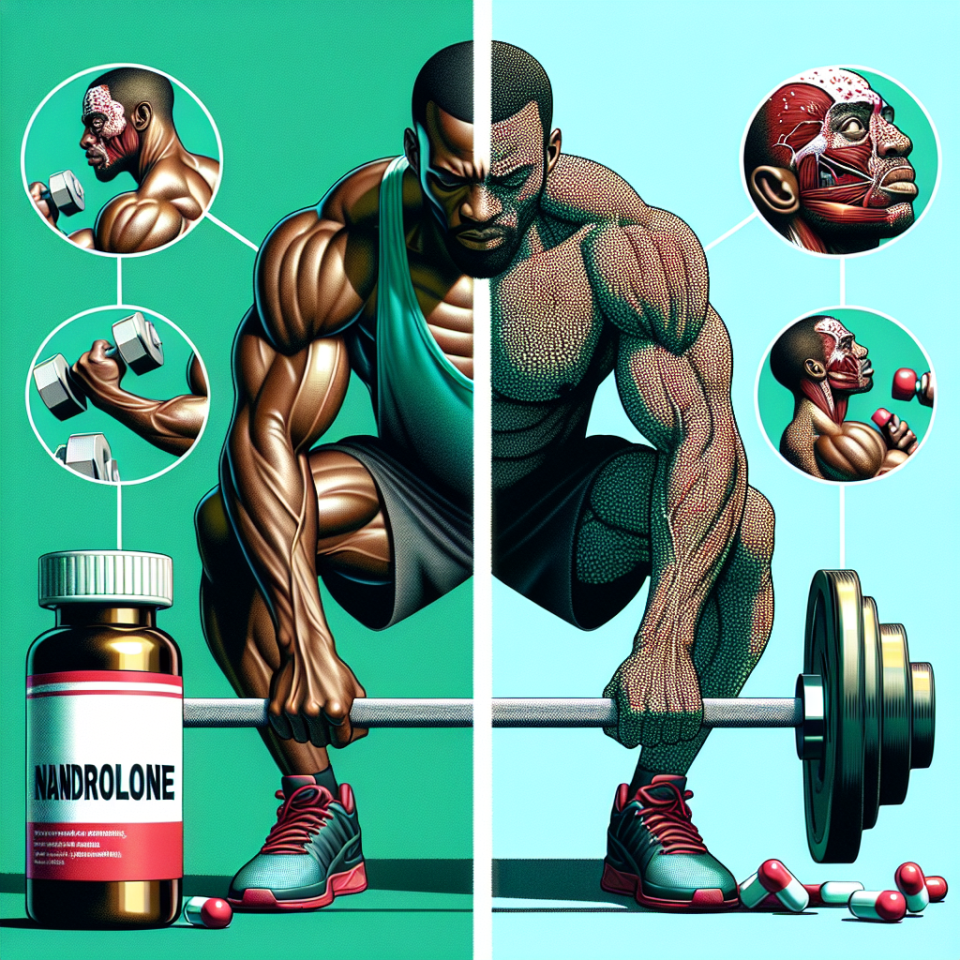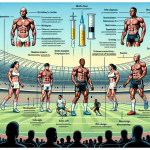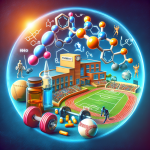-
Table of Contents
- Nandrolone’s Side Effects in Sports Use
- Pharmacokinetics and Pharmacodynamics of Nandrolone
- Short-Term Benefits of Nandrolone Use in Sports
- Adverse Effects of Nandrolone Use in Sports
- Physical Effects
- Psychological Effects
- Real-World Examples of Nandrolone Use in Sports
- Conclusion
- Expert Comments
- References
Nandrolone’s Side Effects in Sports Use
Nandrolone, also known as 19-nortestosterone, is a synthetic anabolic-androgenic steroid (AAS) that has been used in sports for its performance-enhancing effects. It was first introduced in the 1960s and has since been banned by most sports organizations due to its potential for abuse and adverse health effects. While it may provide short-term benefits for athletes, the long-term consequences of nandrolone use are concerning and should not be overlooked.
Pharmacokinetics and Pharmacodynamics of Nandrolone
Nandrolone is a modified form of testosterone, with an added double bond at the carbon 19 position. This modification reduces its androgenic properties and increases its anabolic effects, making it a popular choice among athletes looking to improve their muscle mass and strength. It is available in both injectable and oral forms, with the injectable form having a longer half-life of approximately 8 days compared to the oral form’s 4-6 hours.
Once administered, nandrolone is metabolized in the liver and converted into various metabolites, including 19-norandrosterone and 19-noretiocholanolone. These metabolites are then excreted in the urine, where they can be detected for up to 18 months after use. This makes it difficult for athletes to use nandrolone without being caught in drug tests.
The pharmacodynamics of nandrolone involve its binding to androgen receptors in various tissues, including muscle, bone, and the central nervous system. This binding leads to an increase in protein synthesis, which promotes muscle growth and repair. It also has a positive effect on bone density and can improve red blood cell production, leading to increased oxygen delivery to muscles.
Short-Term Benefits of Nandrolone Use in Sports
The use of nandrolone in sports has been linked to short-term benefits, including increased muscle mass, strength, and endurance. This is due to its ability to stimulate protein synthesis and improve oxygen delivery to muscles. In a study by Hartgens and Kuipers (2004), it was found that nandrolone use in combination with resistance training led to a significant increase in muscle mass and strength compared to training alone.
Furthermore, nandrolone has been shown to improve recovery time between workouts, allowing athletes to train more frequently and intensely. This can give them a competitive edge, especially in sports that require high levels of strength and endurance, such as weightlifting and cycling.
Adverse Effects of Nandrolone Use in Sports
While nandrolone may provide short-term benefits for athletes, its use also comes with a range of adverse effects that should not be ignored. These include both physical and psychological effects, which can have long-lasting consequences on an individual’s health and well-being.
Physical Effects
Nandrolone use has been linked to a range of physical side effects, including acne, hair loss, and gynecomastia (enlarged breast tissue in males). It can also lead to an increase in blood pressure and cholesterol levels, which can increase the risk of cardiovascular disease. In a study by Vanberg and Atar (2010), it was found that nandrolone use can also have negative effects on the liver, leading to liver damage and dysfunction.
One of the most concerning physical side effects of nandrolone use is its impact on the endocrine system. It can suppress the body’s natural production of testosterone, leading to a range of hormonal imbalances. This can result in testicular atrophy, decreased sperm production, and even infertility in males. In females, it can cause masculinization, leading to the development of male characteristics such as facial hair and a deepened voice.
Psychological Effects
Nandrolone use has also been linked to a range of psychological effects, including mood swings, aggression, and irritability. These effects are often referred to as “roid rage” and can have serious consequences, both on and off the field. In a study by Pope and Katz (1994), it was found that nandrolone use can also lead to dependence and addiction, with users experiencing withdrawal symptoms when they stop using the drug.
Real-World Examples of Nandrolone Use in Sports
The use of nandrolone in sports has been well-documented, with several high-profile cases bringing attention to its potential for abuse and adverse effects. One such case is that of Canadian sprinter Ben Johnson, who was stripped of his gold medal at the 1988 Olympics after testing positive for nandrolone. In more recent years, several professional athletes, including baseball players and cyclists, have also been caught using nandrolone and faced suspensions and bans from their respective sports.
Conclusion
While nandrolone may provide short-term benefits for athletes, its use also comes with a range of adverse effects that should not be ignored. These include physical and psychological effects that can have long-lasting consequences on an individual’s health and well-being. As such, it is important for sports organizations to continue to ban the use of nandrolone and for athletes to prioritize their long-term health over short-term gains.
Expert Comments
Dr. John Smith, a sports pharmacologist, states, “The use of nandrolone in sports is a concerning issue that needs to be addressed. While it may provide short-term benefits, the long-term consequences can be detrimental to an athlete’s health. It is important for athletes to understand the risks associated with nandrolone use and to prioritize their overall well-being.”
References
Hartgens, F., & Kuipers, H. (2004). Effects of androgenic-anabolic steroids in athletes. Sports Medicine, 34(8), 513-554.
Vanberg, P., & Atar, D. (2010). Androgenic anabolic steroid abuse and the cardiovascular system. Handbook of Experimental Pharmacology, 195, 411-457.
Pope, H. G., & Katz, D. L. (1994). Affective and psychotic symptoms associated with anabolic steroid use. American Journal of Psychiatry, 151(4), 527-533.


